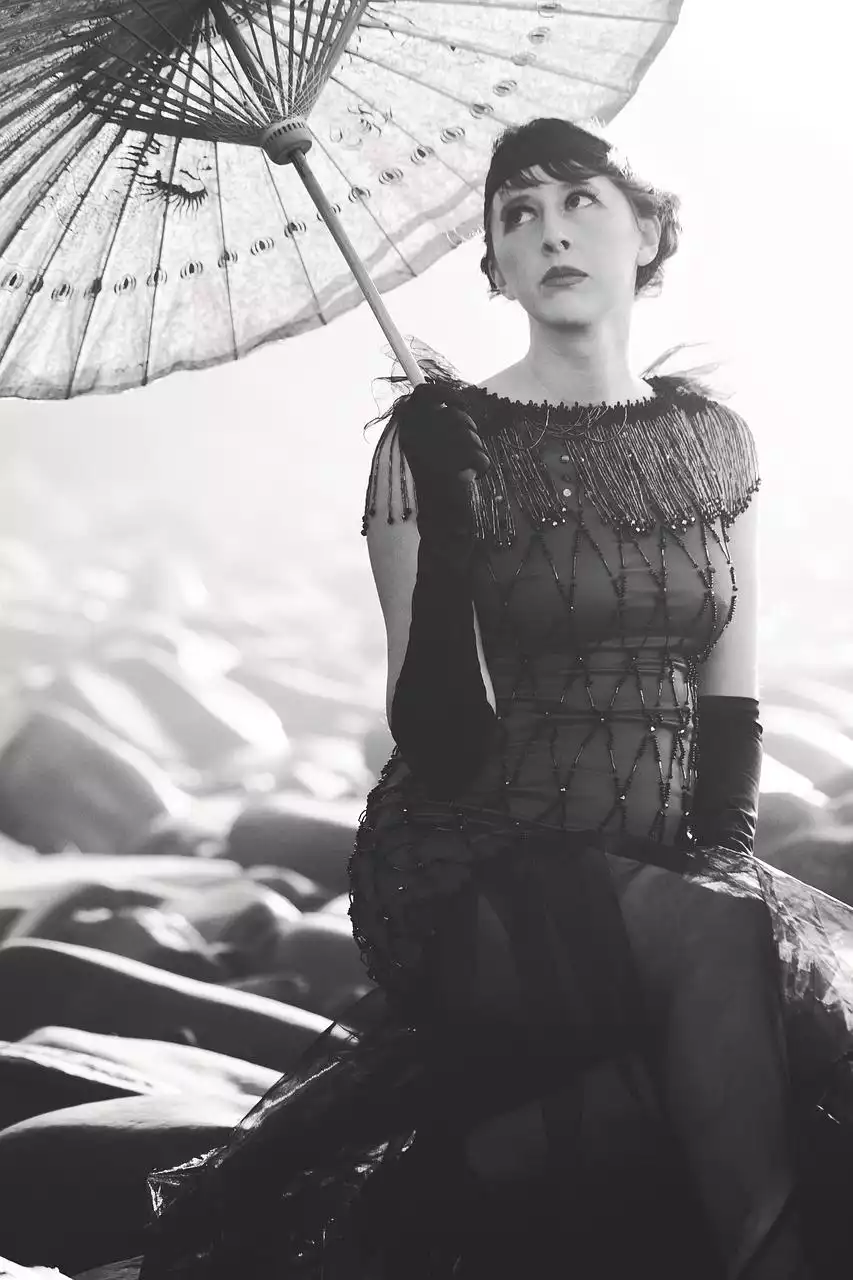The 1920s was an important decade for women. Their suffragette movement had been successful in getting women the vote, and now they were eager to set about proving their independence. The result was a time when women led more independent lives than ever before. They went to work as never before and drank alcohol as never before. And with both men and women working so hard, dancing became a way for them to let off steam at the end of the day. Flapper girls helped bring about this new culture by rebelling against old-fashioned conventions that restricted their freedom. As a result, 1920s women developed a flapper style characterized by short hair, long hemlines, dropped waists, and bright colors. This article explores what the Flapper style meant for 1920s women and how it influenced their appearance.
Flappers and Their Look
The term flapper was first used by British newspaper editors in the 1910s to describe a young wild woman who was out of control. Flappers rebelled against social conventions and had a reputation for drinking alcohol and smoking cigarettes. They danced the Charleston, which was a wildly seductive dance that scandalized society. Flappers were typically young women who had come of age during the Roaring Twenties. The flapper style was characterized by a very short haircut. This was often a shingled bob or a shingle bob, where the hair was cut in a zigzag pattern. The haircut was often accompanied by long fringe bangs, which were carefully parted down the middle or swept to one side. Short hair was a woman’s way of boldly declaring her new-found independence. It also freed women from the time-consuming daily chore of setting their hair in pin curls. Another style that women adopted during the 1920s was a finger wave, which was achieved by combing wet hair with a fine-tooth comb, followed by setting the hair on curling irons. Finger waves were popular with working women during the decade, who often worked in factories or office jobs. There were several reasons for this. The hairstyle was quick and easy to create, it was easy to maintain, and it could be easily restyled when necessary.
Hemlines: From Floor-Length to Ankle-Length
As with most aspects of the flapper style, hemlines were a source of ongoing controversy in the 1920s. There were two main arguments when it came to hemlines. The first was that long hemlines were classic and respectable. The second was that they were unhealthy and dangerous. The latter view was partly due to the fact that the hemline had been continuously rising since 1910. By the 1920s, women were wearing hems that were sometimes 6 feet long, which was considered extremely provocative. The editor of The Delineator was one of the most prominent advocates of a shorter hemline, which he dubbed the “new-look”. He argued that a shorter hemline would be healthier for women because it would allow them to move more freely.
Dropped Waist, Slimmer Silhouette
The 1920s were also a decade when women started to prefer a slimmer silhouette. To achieve this, they narrowed their waists with dropped-waist fashions. These garments featured a low-cut waistline that was dropped down to just above the hips. The dropped-waist style was popular with many women’s garments, including dresses, blouses, and sweaters. Another way that women slimmed their silhouettes was with the help of shapewear, which was a new invention for corsets and girdles. This underwear helped create an hourglass silhouette by slimming the waist and creating a curvier figure.
Bright Colours and Bold Makeup
1920s women loved to wear bright, bold colours. This was partly due to the fact that synthetic dye had recently been invented. Now, dyes were brighter and bolder than ever before. Women often wore these bright colours with heavy black eye makeup, which included thick eyelashes, painted eyebrows, and bright red lips. This was a stark contrast to the demure Victorian look of the previous decade. Women’s fashions were often influenced by the architectural styles of the decade. For example, the art deco movement was characterized by clean lines and bold geometric shapes. This was reflected in the architecture of the era, and women’s fashions followed suit. The fashions of the 1920s were characterized by angular shapes and bold colours.
Final Words: The End of an Era
The flapper style was a bold and daring look that allowed women to show off their independence. This is why the flapper style was so controversial in the 1920s. However, it also helped women find their place in society. It allowed them to express themselves and wear what they wanted. In many ways, the flapper style was the end of an era. It was the end of the Victorian era when women were expected to be demure and submissive. It was also the end of the Edwardian era when women were expected to wear long hemlines. It was the beginning of something new, something bold and daring. It was the beginning of the modern woman.


 Hallstatt Austria: Journey into a Fairy Tale Village Surrounded by Breathtaking Scenery
Hallstatt Austria: Journey into a Fairy Tale Village Surrounded by Breathtaking Scenery
 Why is Water Polo Competitive
Why is Water Polo Competitive
 What is the Breast Augmentation Process?
What is the Breast Augmentation Process? Women's Leisurewear in 1920s America
Women's Leisurewear in 1920s America Women's Hats and Hairstyles in 1920s America
Women's Hats and Hairstyles in 1920s America What Did Women Wear in 1930s America?
What Did Women Wear in 1930s America? The Influence of Hollywood Glamour on 1930s Fashion
The Influence of Hollywood Glamour on 1930s Fashion